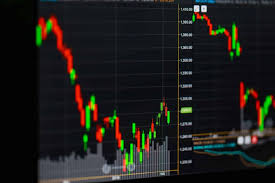
Forex trading can be both thrilling and daunting, with potential for great profit as well as significant risks. A well-structured approach is essential, and having robust strategies at your disposal may significantly improve trading results. This guide focuses on various forex trading strategies, and you can find valuable resources available for download in forex trading strategies pdf Trading Brokers in Morocco that will help you navigate these waters.
Understanding Forex Trading
Before diving into specific strategies, it is crucial to understand the forex market itself. Forex, or foreign exchange, entails trading currencies against one another. It is one of the largest financial markets globally, characterized by its high liquidity and volatility. Traders have a plethora of strategies to choose from, catering to various risk appetites and trading styles.
The Importance of a Trading Strategy
A trading strategy is a predefined plan that specifies when to enter and exit trades while managing risk. The importance of having a strategy cannot be overstated; it eliminates emotional decision-making and provides structure to trading activities. Furthermore, various strategies can be implemented depending on whether you are a day trader, swing trader, or long-term investor.
Types of Forex Trading Strategies
1. Scalping
Scalping is a short-term trading strategy that aims to profit from small price changes. Traders using this approach frequently open and close positions, sometimes holding them for only seconds. This technique requires a high level of discipline, quick decision-making, and an understanding of market timing. Scalpers often rely on technical analysis and tools like charts to make instant decisions.

2. Day Trading
Day trading involves opening and closing trades within the same day, avoiding overnight exposure to risks. Day traders typically analyze market trends and use indicators to forecast short-term movements in currency pairs. They must be vigilant throughout the trading session and have strict risk management rules in place.
3. Swing Trading
Swing trading is a medium-term strategy focusing on taking advantage of market ‘swings.’ Traders hold onto positions for several days to weeks, capitalizing on market volatility. This approach allows for less frequent monitoring and can suit those who balance trading with other commitments.
4. Position Trading
This long-term strategy involves taking positions based on fundamental analysis and significant market movements. Traders using this method hold onto their investments for weeks, months, or even years, minimizing the impact of short-term fluctuations. Position trading is best suited for those who can analyze economic indicators and geopolitical factors impacting currency values.
Key Components of a Solid Forex Strategy
Regardless of the strategy you choose, several critical components are essential for success:

- Risk Management: Establishing how much you are willing to risk on each trade is fundamental. Effective risk management can protect your trading capital even after a series of losses.
- Trading Plan: A well-defined trading plan outlines goals, risk tolerance, strategies, and rules for entry and exit. It acts as a roadmap to navigate the market effectively.
- Technical and Fundamental Analysis: Successful traders incorporate both technical analysis (price action, indicators) and fundamental analysis (economic news, market sentiment) into their strategies.
- Psychology: The mental aspect of trading cannot be ignored. Maintaining emotional control and sticking to the trading plan is crucial for long-term success.
Tools and Resources
Utilizing various tools can enhance your trading strategies. This includes charting platforms, economic calendars, and algorithmic trading systems. Additionally, many brokers provide educational resources, webinars, and trading signals that traders can use to refine their techniques further.
Combining Strategies for Greater Success
Traders often find success by combining two or more strategies to create a unique trading style that suits their needs. For instance, blending swing trading with technical analysis tools for shorter-term price predictions can yield better outcomes. It also provides flexibility in adapting to changing market conditions.
Final Thoughts
In summary, developing a well-rounded forex trading strategy is vital for achieving success in the forex market. Whether you select scalping, day trading, swing trading, or position trading, make sure to include essential components like risk management and a solid trading plan. Continuous learning and adaptation to market conditions will enhance your ability to navigate the financial landscape effectively.
For those interested in further resources and guides, consider downloading PDF materials from trusted sources. These resources can provide additional strategies and insights to help you become a successful forex trader.
